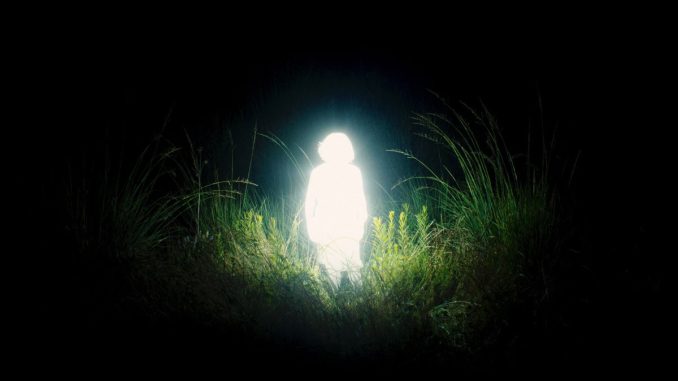
Tomás Gómez Bustillo’s charming and intelligent Chronicles of a Wandering Saint It’s a natural sequel to the two short films that made him famous. Soy Buenos Aires (A strange, picaresque rags-to-riches story) A Museum of Ephemeral Wonders (A collection of dramatized paranormal events). ChronicleAs with his two short films, he is primarily interested in spiritual, ethical and religious contrasts, scenarios that mix miracles and chance, faith and rationality, boredom and inspiration. But the comparisons end there. Chronicle It is in every respect a more serious, restrained and moving work of art and one that ranks among the greatest works of contemporary Argentine cinema.
The story revolves around Rita, an elderly caretaker who discovers what she thinks is a statue of Rita of Cassia, who disappeared from the town some 30 years ago. After sneaking the statue home, she asks the local priest if it might be a sign from God. “It’s not a sign,” the priest says. “It’s a miracle!” Later that night, gazing at the statue in awe, she notices something odd: what her Rita is clutching is not a cross, but a crown of thorns. It’s a terrible fake. Devastated, she seeks comfort from her loving husband, Norberto, who convinces her to go through with the ruse anyway. “It can still be a miracle,” Norberto tells her. “It’s all a matter of perspective… If you think it’s a miracle, then it is.” And so the next day, the couple makes plans for a grand unveiling, complete with a slightly tweaked statue, some clumsy acting, and a wreath of daisies.
It’s impossible to say much more about the plot without revealing some of the best jokes and surprises. It’s only fitting, then, that the development of the film’s main themes and atmosphere relies primarily on non-narrative elements. Chief among them is the use of light. In fact, nearly every shot contains some form of emanations – usually from windows, but also from phone screens, street lamps, bedside lamps, doors, halos, camera flashes, and, at the end of the film, from the Northern Lights (an inversion of the Argentine myth “Luz Mara”) that surround those who will soon be going to heaven. The main purpose of these emanations is to foreshadow (literally) Rita’s eventual fate, but they also play a number of secondary roles. The wistful halo and chunky devil’s horns, for example, give the film a camp feel, Auto da Compadecidaand the bright light creates a striking chiaroscuro that enhances the quasi-religious imagery.
Iconographic irony, absurdity, and ambiguity abound. Take, for example, the opening scene: the three women enter the church and see a pillar of light illuminating the face and hands of Rita as she kneels in prayer. To them, the scene is sacred, but they do not know that Rita has been staggering around the pews, chasing the pillar of light so that she will be “in the right place” as they enter the church. Or consider the statue that Rita and Norbert toy with: it has religious symbolism, of course, but also a commercial cheapness, an ulterior motive (to deceive the townspeople), and a moral versatility that subverts its sacred aspect. Or consider the picturesque interior, with its cracks, crevices, and chipped walls: it looks more like a Renaissance fresco than a modern color photograph. The irony is that the people depicted in it are given all the dignity of their spiritual and artistic tradition.
The broader theme of these playful tricks and double meanings is that humans seek fiction; that is, a poetic lie that can somehow circumvent the tedium and meaninglessness of the world and bring spiritual unity. In an early scene, Norberto describes two pairs of jeans hanging on a clothesline as “dancing.” “What are they showing?” Rita asks. “The wind?” “Yes. Maybe.” Equally striking, in a later scene, we learn that the flickering lights are not due to an electrical fault, but the movement of a trapped spirit. When asked if all the lights are equally occupied, the spirit replies with a laugh, “No, no… let’s not get carried away.” The metaphysics of the film thus makes a wonderful contrast. While sympathetic to certain religious rituals and ideas (spirits, judgment day, reincarnation, sanctification, heaven, hell), these generalities are constantly humanized, containing within them all the flaws, trivialities, contradictions, dysfunctions and bureaucracies of society. For instance, before you can enter Heaven, you will need to choose between the Express and Premium packages and listen to the terms and conditions.
This particular vein of darkly ironic religious humor goes back to Kafka, most famously in the short story “Poseidon,” which portrays Olympians as bored, busy office workers who never have time to swim, and perhaps to a lesser extent to Kierkegaard. But Bustillo’s film doesn’t leave the audience with the cold emotion that Kafka’s creepy stories often leave. Part of the reason is that Rita and Norbert are much more human than Kafka’s faceless protagonists, but mainly because Bustillo doesn’t bother too much with piling on emotions. After every lurid romp, he returns to the dramatic idiom, to pathos and catharsis, so that his conclusions are less cynical and less world-blaming. For example, his concept of an afterlife has its roots in the Christian tradition, but later moves, rather gracefully, to a deeper humanism: heaven is false, and the liberated soul is as lonely as its embodied host. But in those moments when the past appears beautifully in the present, like a warm beam of light falling on an empty bed, the dead can continue to live.
Chronicles of a Wandering Saint It will be released in theaters on June 28th.
Leave a Reply